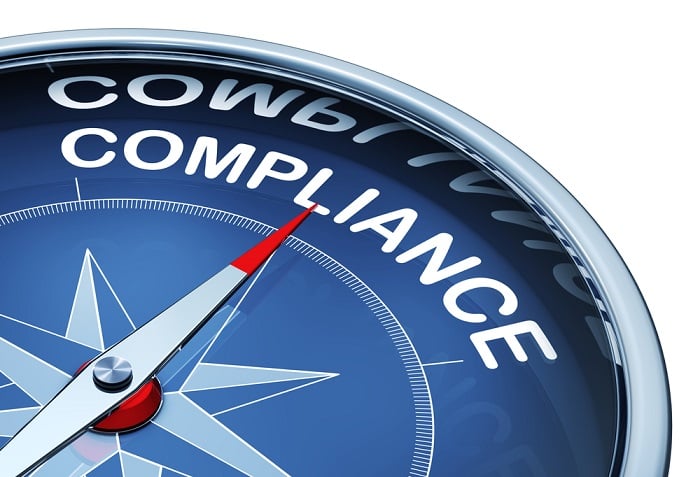 The DOLand the IRS have increased the cost of penalties for 401(k) andbenefits plan non-compliance. (Photo: Shutterstock)
The DOLand the IRS have increased the cost of penalties for 401(k) andbenefits plan non-compliance. (Photo: Shutterstock)
Just after the New Year, the United States Department of Labor(DOL) issued a final rule increasing ERISA's noncompliancepenalties.
|In Department of Labor Federal Civil Penalties InflationAdjustment Act Annual Adjustments for 2018, 83 Federal Register 7 (Jan. 2, 2018), the DOLannounced the annual adjustments that apply to penalties assessedafter Jan. 2 for certain violations that occurred after Nov. 2,2015. On the same day, the Internal Revenue Service (IRS)released Revenue Procedure 2018-4 which revamps theuser fee schedule for qualified plan failures submitted to the IRSVoluntary Correction Program (VCP) for compliance statementspursuant to the Employee Plans Compliance Resolution System(EPCRS), set out in Revenue Procedure 2016-51. The IRS announcement isespecially significant because the Revenue Procedure eliminatesreduced fees for common compliance errors in qualified plans like401(k) plans and defined benefit plans.
|Increased ERISA penalties
Increased penalties should encourage employers to pay closerattention to the routine plan processes that create operationalrisks and address compliance concerns immediately so that the newpenalties do not (themselves) become an issue.
|On the ERISA front, this means:
- Issuing automatic contribution notices before the planyear starts—the new penalty is $1,693 per day;
- If it is conceivably possible that a record-keeping platform(or other operational) change restricting plan rights will spanlonger than three consecutive business days, issuing timelyblackout notices—the penalty increases to $136 per day perparticipant;
- Not ignoring DOL requests for plan information—new penaltiesstart at $152 per day per document request;
- Maintaining predecessor employer records sufficient todetermine any applicable creditable service—the penalty increasesto $29 per participant per day; and
- Curbing impermissible use of participant geneticinformation—new penalties increase to $114 per day per participant,plus a potential $2,847 civil monetary penalty that could increaseto $17,084 for uncorrected violations that are more than de minimisand $569,468 for egregious unintentional failures.
New fee structure for VCP-corrected qualified planfailures
|For qualified plans, the new VCP fee schedule is a stark changebecause fees now are based on plan assets reported on the mostrecently filed annual report (Form 5500).
|There is an exception to use a prior year's Form 5500 if assetinformation is not available when filing the VCP application, butthat exception is not available if the submission is filed morethan seven months after the close of the most recent plan year.
|The deadline for filing Form 5500 is the last day of the seventhmonth after the plan year ends (without an extension). So, in otherwords, an employer who has not complied with the Form 5500requirement cannot file a VCP submission while theuntimely/late/delinquent form is outstanding. Both of thecompliance failures must be addressed—the late annual report mustbe filed and the VCP user fee must be calculated based on the planassets reported on that late form. Otherwise, the IRS will returnthe VCP filing (possibly without the submitted fee), which maycreate even more risk if the IRS then considers the substance ofthat returned filing when determining whether to initiate anaudit.
|The new VCP fees start at $1,500 for small plans with no morethan $500,000 in plan assets, and double ($3,000) for plans between$500,000 and $10 million. For large plans with over $10 million inassets, the fee is $3,500. Common compliance errors that are nowmore costly to fix include (for large plans):
| Failure | Before 1/2/2018 | Now |
| Good faith and interim amendment failures | $375 | $3,500 |
| Certain late amendment (non-amender) failures | 50% fee reduction | $3,500 |
| Required minimum distribution (RMD) failures(when the failure affects less than 150 participants and it isthe sole error submitted) | $500 | $3,500 |
| Certain plan loan 72(p) limit, duration,amortization and default failures (when the failure affectsless than 25% of participants during the impacted year (51-100participants) and it is the sole error submitted) | $1,000 | $3,500 |
Compliance risks related to required minimum distributions areparticularly common and far-reaching because oftentimesparticipants fail to keep their contact information updated. InOctober, the Acting Director for IRS Employee Plan Examinationsissued an internal memorandum generally instructingagents not to pursue RMD violations related to late commencement ofdistributions if the relevant plan took specific steps to searchdiligently for missing/non-responsive participants.
|Most notably, some of the steps include searches of related planand plan sponsor records, and enlisting third parties (either athird-party tool or the third party itself). These areprerequisites for IRS audit relief related to late RMDs.Keep in mind that, on a more global ERISA scale, the failure tosearch diligently creates breach of fiduciary duty risks.
|The bottom line is that, although there may be institutionalchallenges with getting a handle on plan compliance, increasedrisks and noncompliance penalties will be more painful.
|Christina M. Crockett is Senior Counsel (Employee Benefits)at Fifth Third Bank. Before joining Fifth Third, she was in privatepractice for several years in the Washington, D.C., metropolitanarea where she focused exclusively on employee benefits tax andERISA compliance matters.
Complete your profile to continue reading and get FREE access to BenefitsPRO, part of your ALM digital membership.
Your access to unlimited BenefitsPRO content isn’t changing.
Once you are an ALM digital member, you’ll receive:
- Critical BenefitsPRO information including cutting edge post-reform success strategies, access to educational webcasts and videos, resources from industry leaders, and informative Newsletters.
- Exclusive discounts on ALM, BenefitsPRO magazine and BenefitsPRO.com events
- Access to other award-winning ALM websites including ThinkAdvisor.com and Law.com
Already have an account? Sign In
© 2024 ALM Global, LLC, All Rights Reserved. Request academic re-use from www.copyright.com. All other uses, submit a request to [email protected]. For more information visit Asset & Logo Licensing.








